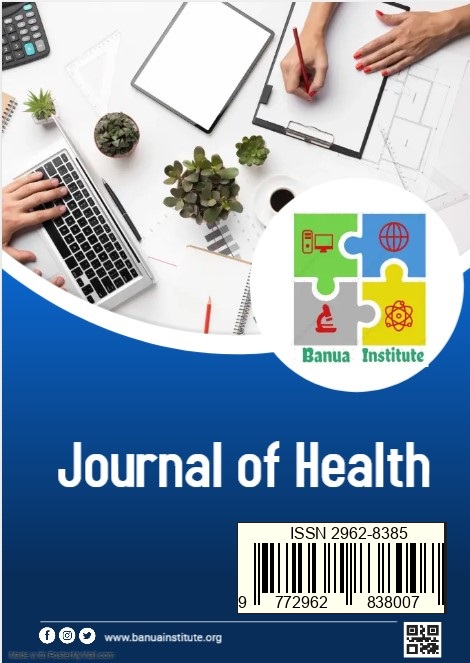CORRELATION BETWEEN SNACKING HABITS AND DIGESTIVE PROBLEMS IN SCHOOL-AGED CHILDREN
Main Article Content
Abstract
Background: School-age children spend a significant portion of their day at school. Due to the high intensity of school activities, they often feel hungry more frequently, prompting them to purchase snacks. They are typically drawn to foods that are visually appealing in terms of color, taste, and packaging, often without considering the potential health effects. As a result, these children frequently suffer from digestive issues caused by harmful microorganisms such as those leading to diarrhea and typhoid fever or by toxic chemical substances that can pose serious health risks. Purpose: The aim of this study is to examine the relationship between snacking habits and the occurrence of digestive disorders among school-age children at an elementary school in Palembang. Method: This study employed an analytical survey with a cross-sectional design, using purposive sampling as the sampling technique, and involved a total of 72 respondents. Discussion: Data were collected using questionnaires. The results of the Chi-square test showed a p-value of 0.000, which is less than the significance level of α = 0.05, indicating a significant relationship between snacking habits and the incidence of digestive disorders. Additionally, it was found that 34 children (47.2%) had unhealthy snacking habits, while 38 children (52.8%) demonstrated healthy snacking habits. Regarding digestive health, 38 children (52.8%) experienced digestive disorders, whereas 34 children (47.2%) did not.
Article Details
References
Ahyanti, M., & Rosita, Y. (2022). Determinan Diare Berdasarkan Pilar Sanitasi Total Berbasis Masyarakat. Jurnal Kesehatan Lingkungan Indonesia, 21(1), 1–8.
Albano, G. D., Malta, G., La Spina, C., Rifiorito, A., Provenzano, V., Triolo, V., Vaiano, F., Bertol, E., Zerbo, S., & Argo, A. (2022). Toxicological findings of self-poisoning suicidal deaths: a systematic review by countries. Toxics, 10(11), 654.
Gangrade, N., St Fleur, K., & Leak, T. M. (2022). Factors that influence snacking behaviors of adolescents from urban communities: a qualitative study. Journal of Nutrition Education and Behavior, 54(6), 521–531.
Kliemann, N., Al Nahas, A., Vamos, E. P., Touvier, M., Kesse-Guyot, E., Gunter, M. J., Millett, C., & Huybrechts, I. (2022). Ultra-processed foods and cancer risk: from global food systems to individual exposures and mechanisms. British Journal of Cancer, 127(1), 14–20.
Motuma, A., Tolera, S. T., Alemu, F. K., Adare, D., Argaw, R., Birhanu, A., Shiferaw, K., Hunduma, G., Letta, S., & Temesgen, S. (2025). Prevalence and risk factors of diarrhea among under-five children in Ethiopia: A systematic review and meta-analysis. BMC Public Health, 25(1), 1–17.
Parker, E. D., Lin, J., Mahoney, T., Ume, N., Yang, G., Gabbay, R. A., ElSayed, N. A., & Bannuru, R. R. (2024). Economic costs of diabetes in the US in 2022. Diabetes Care, 47(1), 26–43.
Ribeiro, A. A., & Paster, B. J. (2023). Dental caries and their microbiomes in children: what do we do now? Journal of Oral Microbiology, 15(1), 2198433.
Rose, N., Reeve, B., & Charlton, K. (2022). Barriers and enablers for healthy food systems and environments: the role of local governments. Current Nutrition Reports, 11(1), 82–93.
Vos, M., Deforche, B., Van Kerckhove, A., Michels, N., Poelman, M., Geuens, M., & Van Lippevelde, W. (2022). Determinants of healthy and sustainable food choices in parents with a higher and lower socioeconomic status: A qualitative study. Appetite, 178, 106180.
Xu, J. (2022). The roles of family and school members in influencing children’s eating behaviours in China: A narrative review. Children, 9(3), 315.
Yuswandi, Y., Musri, M., Resiani, B., & Gustryanti, K. (2024). Association between duration of gadget use and social development in school-age children. Malahayati International Journal of Nursing and Health Science, 7(4), 479–485.
